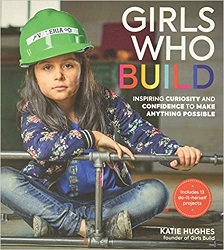Review of A Line Can Go Anywhere, written by Caroline McAlister, illustrated by Jamie Green
The Brilliant, Resilient Life of Artist Ruth Asawa
written by Caroline McAlister
illustrated by Jamie Green
Roaring Brook Press, 2025. 40 pages.
Review written June 6, 2025, from a library book.
Starred Review
I love the way my job at the library brings me into contact with beautiful picture book biographies of people I never would have known about otherwise. A Line Can Go Anywhere is about the American sculptor and artist Ruth Asawa. She is best known for her sculptures made from wire looped and intertwined into lovely shapes.
And author Caroline McAlister takes the idea of those long lines of wires turned into form and applies it to the artist’s life.
When Ruth was a child, there was an invisible line between her home life, where she spoke Japanese and had food and customs from Japan, and her school life in an American elementary school. Then Japan attacked Pearl Harbor – and her father was arrested, and Ruth and her mother and six siblings were imprisoned first at a racetrack, and then at a Relocation Center in Arkansas. But some skilled artists taught the children at the racetrack – and Ruth began sketching the lines around her.
She was allowed to leave to attend college to become an art teacher – but they refused to place her in a school. So she went on to a more open college in North Carolina, and learned to truly express herself in art.
I like this page that explains how she began her distinctive art from wires:
Then on a summer trip to Mexico, Ruth watched women carry eggs in woven wire baskets. She liked that the baskets were sturdy, strong, and practical, but also beautiful, patterned, and transparent. This was art made by ordinary people, used in their everyday lives. It didn’t hang on museum walls.
She thought back to the barbed wire that had kept her imprisoned at the Arkansas camp. Now as the world moved on from war, she found freedom in twisting wire into cells that divided and multiplied. A single strand of ordinary wire became a continuous piece with no beginning or end. She demonstrated that a line could go anywhere, be anything. A line could stretch into infinity.
The book goes on to talk about some public art she made and about how she continued to express herself. The back matter gives more details and includes of a photo of the artist with her wire art.
An interesting, informative, and inspirational story.
carolinemcalisterauthor.com
jamiegreenillustration.com
Find this review on Sonderbooks at: www.sonderbooks.com/Childrens_Nonfiction/line_can_go_anywhere.html
Disclosure: I am an Amazon Affiliate, and will earn a small percentage if you order a book on Amazon after clicking through from my site.
Disclaimer: I am a professional librarian, but the views expressed are solely my own, and in no way represent the official views of my employer or of any committee or group of which I am part.
What did you think of this book?









